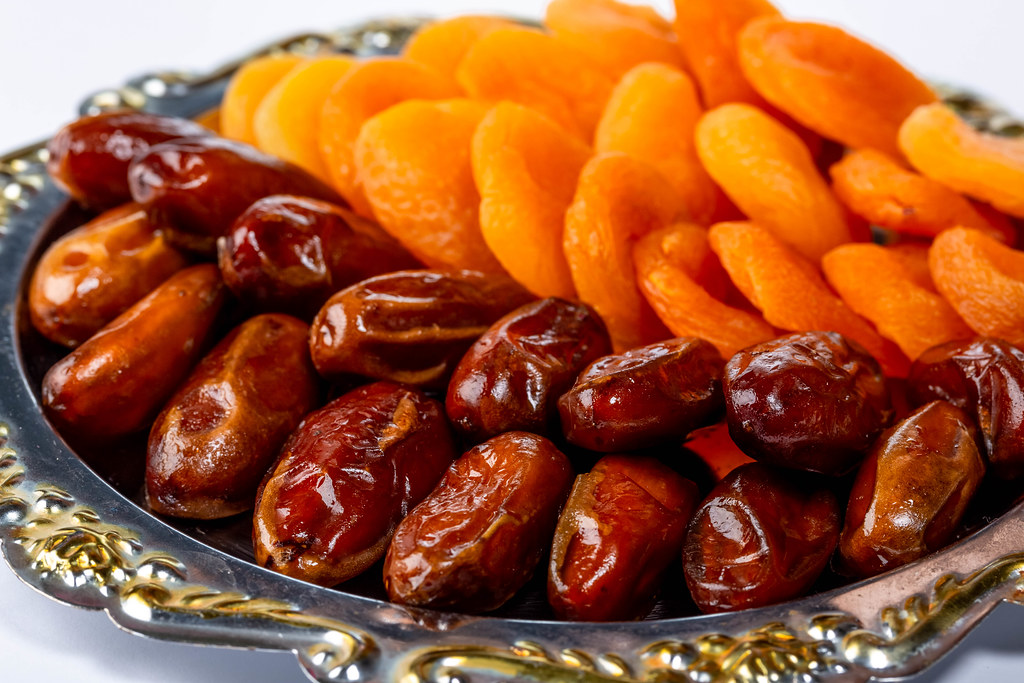Difference Between Figs and Dates
Figs are the fruits that are formed on the fig tree, Ficus carica. Dates are fruits that are produced on the date palm tree, Phoenix dactylifera.

What is Figs?
Definition:
A fig is a type of fruit that is formed on a fig tree, which is a plant of the genus Ficus and species carica. People eat figs as fresh fruit or as dried fruit and figs are considered a healthy food option.
Distribution:
Figs are found and grow abundantly in many parts of the world today, but the original range of the fig tree is believed to be that of the Mediterranean countries as well as parts of Asia. The fig trees generally grow optimally in warm conditions and have to have soil that drains well.
Properties:
The fruit of the fig is usually green in color or purple in color and it is formed in the axils of leaves or where leaves were once attached on the stems of the plant. The fruits are also called syconia and they are produced individually or as pairs.
Formation:
There are two main types of fig fruits that are produced, one from long-styled flowers which are edible and another type that is produced from a different type of female flower, which is a short-styled flower. In the latter case, the fruits are inedible and the tree is called a caprifig. Fig pollination is through wasps which are specialized for pollination of fig trees.
Health benefits:
Figs are a healthy food item that can be eaten either fresh or dried. The figs contain a lot of calcium, at 20 percent of recommended daily intake, and they contain magnesium, potassium and even 10 g of fiber. The potassium and magnesium are important electrolytes that you need to stay healthy, and the fiber is also beneficial for good health, especially for the digestive system. The figs are also good sources of iron and phosphorous and may help to prevent disease through the presence of various phenolic compounds and other phytochemicals.

What is Dates?
Definition:
A date is a fruit that is produced by the date palm tree, which has the scientific name Phoenix dactylifera. The fruit can be eaten either fresh or dried, depending on where the fruit is harvested.
Distribution:
Date palms naturally grow in areas of the world that have a dry and hot climate, such as the middle-eastern countries and northern parts of Africa. Countries of the Middle East have depended on date palms as a source of food and other products for many centuries.
Properties:
The date fruit is usually a brown to reddish-brown color with a wrinkled appearance. It is also oval in shape and has a sticky texture, and is classified as a drupe. Unlike figs that contain multiple seeds, a date fruit contains only one seed, which means it does not have the crunchy texture that a fig has when eaten.
Formation:
The date fruits are produced in bunches on the palm tree, and they can weigh as much as 8 kg per bunch. A single bunch may contain 1000 or more individual fruits. The date palm trees start to produce fruit at about 5 years old and they can continue to produce fruit for several years later but eventually, over time, they do produce less and less fruit. Peak production is at about 10 years, but date palm trees continue to form fruit for several decades.
Health benefits:
The date fruit does contain healthy nutrients such as magnesium, potassium and a very small amount of calcium (3% RDI). It also does contain some fiber and is considered a healthy food choice. The sugar content though is higher than that of figs, with dates having 63 grams of sugar while figs have only 43 grams per 100 grams.
Difference between Figs and Dates?
Definition
Figs are fruits produced by the fig tree Ficus carica. Dates are fruits that are produced by the date palm tree Phoenix dactylifera.
Properties
Fig fruits are green to purple in color with a rounded shape and crunchy texture when eaten. Date palm fruits are brown to reddish-brown oval-shaped and have a smooth texture when eaten.
Formation
The fruits of figs form singly or in pairs. The fruits of the date palm form in large bunches containing several date fruits.
Number of seeds present in a single fruit
The fig fruit contains many seeds inside it and is thus not a drupe. The date fruit only contains a single seed which is why it is classified as a drupe.
Sugar content per 100 grams
The sugar content of figs is about 43 grams per 100 grams. The sugar content of dates is much higher at about 63 grams per 100 grams.
Calcium content
The calcium content of figs is quite high at 20% of RDI. The calcium content of dates, in comparison, is quite low at about 3% of RDI.
Table comparing Figs and Dates

Summary of Figs Vs. Dates
- Figs and dates are both fruits that people commonly eat fresh or dried.
- Figs have more calcium present and are less sweet than dates.
- Dates are much sweeter than figs and the fruit is produced in large bunches on date palm trees.
- Both figs and dates are considered healthy foods that contain important nutrients such as potassium, magnesium, fiber, and calcium.
- Difference Between Rumination and Regurgitation - June 13, 2024
- Difference Between Pyelectasis and Hydronephrosis - June 4, 2024
- Difference Between Cellulitis and Erysipelas - June 1, 2024
Search DifferenceBetween.net :
Leave a Response
References :
[0]Image credit: https://live.staticflickr.com/65535/32766752857_f1de981544_b.jpg
[1]Image credit: https://commons.wikimedia.org/wiki/File:Figs.jpg
[2]Chao, ChihCheng T., and Robert R. Krueger. "The date palm (Phoenix dactylifera L.): overview of biology, uses, and cultivation." HortScience 42.5 (2007): 1077-1082.
